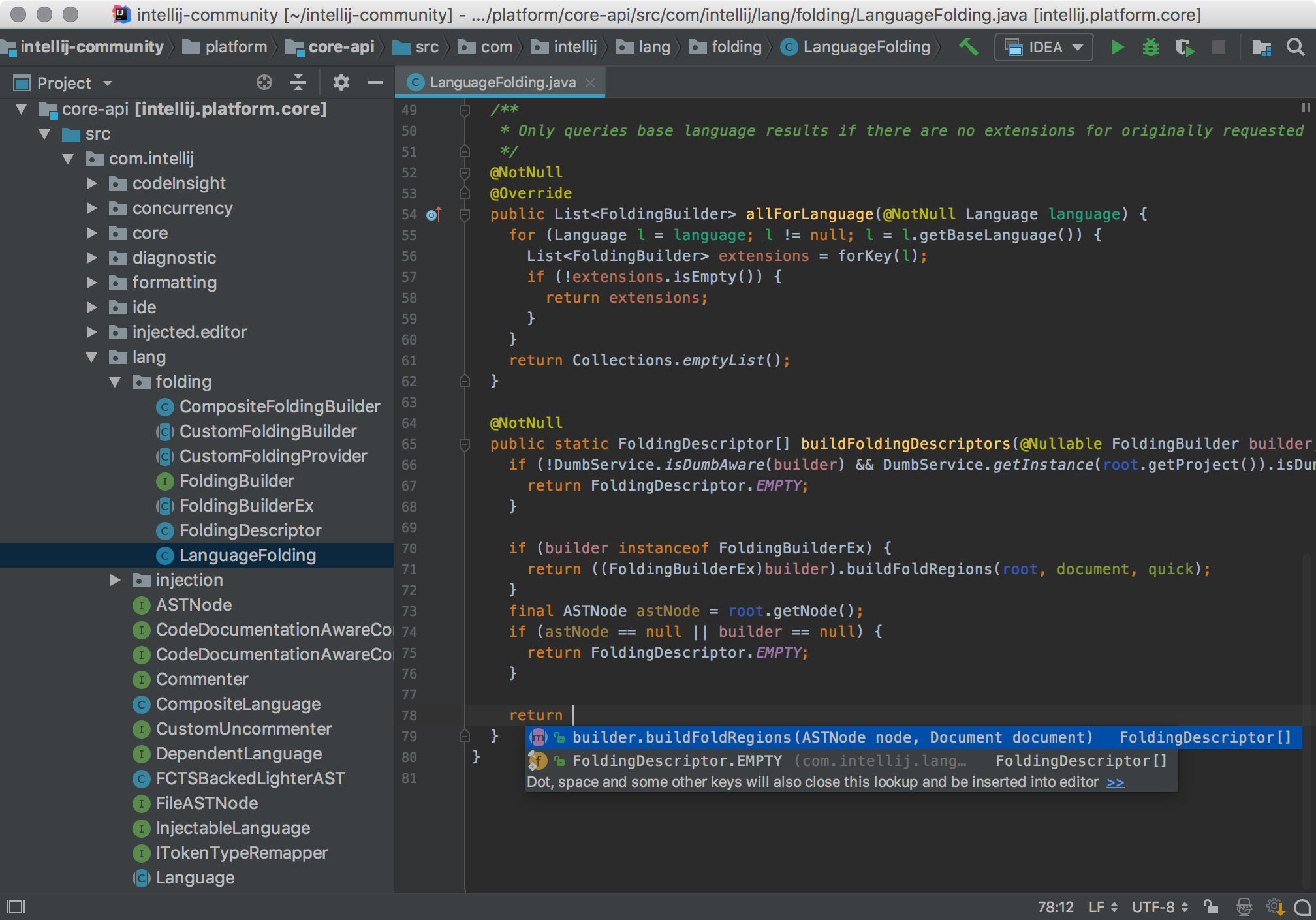
- #HOW TO USE INTELLIJ HOW TO#
- #HOW TO USE INTELLIJ UPDATE#
- #HOW TO USE INTELLIJ CODE#
- #HOW TO USE INTELLIJ MAC#
Here is a little example that shows those steps: import re. Step 3: Call PApplet.main("YourSketchNameHere") to launch your sketch.
#HOW TO USE INTELLIJ CODE#
Step 2: Create a class that extends PApplet and add your code there. This includes the core and any JOGL dependencies you need. Step 1: Add the Processing library to your classpath. But 90% of the rest of the tutorials should work fine. A few things have changed, such as the removal of the ability to embed a PApplet directly into a Swing application.

You say you think things have changed enough so that those tutorials don't work anymore- could you test that assumption by trying it out?īecause those tutorials will still work. You'll have much better luck if you try something out and post an MCVE along with a specific question if you get stuck. Stack Overflow is designed more for "I tried X, expected Y, but got Z instead" type questions.

#HOW TO USE INTELLIJ HOW TO#
I'll show you in chapter two how to import those kinds of projects and how to make adjustments after the project has been imported.It's hard to answer general "how do I do this" type questions. There's one that was built in Eclipse, and there's another one that was built in NetBeans. Finally, I'll mention that there are two particular projects in the exercise files that are designed to be imported and not directly opened. But if you want to look at them, they're available. Because this is a course that's about the IDE more than about the code itself, those solutions projects aren't so important.
#HOW TO USE INTELLIJ UPDATE#
And this directory contains finished versions of all of the projects. Update Path Variable: Updating the PATH variable will allow you to use the command line to run projects in IntelliJ. In addition to the starting exercise files, there's also a solutions directory. I'll type in a couple of numeric values, and then I'll choose a math operator, and my little calculator application does its thing. When you run a command line application that asks for user input, as this one does, you'll be able to run the application right here in what IntelliJ IDEA calls the Run menu. This project has a main class with a main method, so it appears, and I'll click it, and that opens and runs the application. If you don't see those enabled, though, you can always go to the second Run menu choice and then any classes that have main methods in them should appear here. To run a project, go to the menu and choose Run, and if the project has been run previously, you'll see these menu choices are active. On Window, I just press Alt one and it opens, and Alt one again and it closes. Either of those will toggle the project window open and closed. If you don't see the project window on the left, you can go to the menu and choose View, Tool Windows, Project, or press the associated keyboard shortcut. I'll select it and click OK, and that opens the project. And under that, I'll see a directory that's marked with an icon as an IntelliJ IDEA project. And this is the directory for that video. From there, drill down to the Directory you're interested in.
#HOW TO USE INTELLIJ MAC#
If you copied your exercise files to your desktop, you can press control D on Windows or command D on Mac and you'll jump to the desktop directory. In order to open any of these projects in IntelliJ IDEA, start at the welcome screen and choose Open, and then navigate to the project you want. The operating system is hiding it because of the dot at the beginning of the directory name. idea directory won't be visible, but it is there. If you open this directory on Mac OS, the. If you open the directory on Windows, you'll see a subdirectory called. Most of the directories contain IntelliJ IDEA projects. Within each chapter, you'll see subdirectories, and within those subdirectories, you'll see projects.

The exercise files are organized by chapter. I've copied the exercise files to my desktop, but you can place them anywhere on your hard disk.

This course is accompanied by exercise files that you can use to follow along with the demonstrations on screen.


 0 kommentar(er)
0 kommentar(er)
